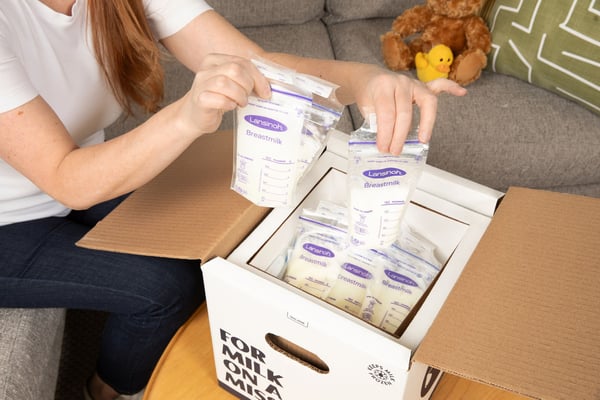How to Save Your Frozen Breast Milk During a Power Outage
By Milk Stork Team on January 17, 2024

As we brace for more extreme weather in 2024, families everywhere are navigating new challenges. For breastfeeding parents, power outages during these conditions bring a unique set of concerns. Follow these tips to safeguard your stash during emergencies.
Ensuring the safety of your frozen breast milk becomes a top priority through winter storms and other severe weather events. With a little planning, you can be prepared for power outages and keep your baby nourished. Read on to learn how.
1. How to keep your breast milk frozen:
- Keep your freezer closed. Remember, an unopened freezer keeps breast milk frozen for up to 48 hours. Avoid opening it to maintain the temperature.
- Store your breast milk in the center. Place your breast milk in the freezer's center, especially in chest freezers, to maximize cold exposure.
- Make a list of neighborhood support. Compile a list of neighbors with generators as a backup for your breast milk stash.
- Use your Milk Stork Stash cooler as backup. If you have a Stash or EcoStash cooler, you can fill it to capacity with frozen breast milk and other frozen goods for up to 96 hours of freezing time. This is especially useful when your freezer begins to lose temperature. Stash coolers can be a reusable, portable lifesaver during power outages and evacuations.
2. If/When your breast milk begins to thaw:
- Monitor your breast milk's consistency. Partially frozen milk, resembling a slushy consistency, can be safely refrozen and is still considered frozen, according to the CDC.
- Use fully thawed breast milk first. Once breast milk is fully thawed, be sure to use it within 24 hours. And as tough as it is, avoid refreezing it.
3. Prepare for power-free pumping:
- Use a car adapter. Many breast pumps are compatible with a car adapter. Keep one on hand for emergencies. Some vehicles also offer built-in outlets. Get familiar with your vehicle's outlets ahead of time.
- Check your pump for a manual option. Some breast pumps can also be manually operated. Check your breast pump's instruction manual for details.
- Hand-express to avoid engorgement. Keep a manual pump in your supply kit and learn hand-expressing techniques for emergencies.
4. Have an emergency feeding plan for your baby:
- Use formula as backup. Not all babies take formula, but it's worth keeping some on hand for emergencies.
- Consider freeze dried breast milk. Another backup feeding option is to freeze dry breast milk, which offers the same convenience and shelf-stability of formula.
Use these essential strategies to maintain the integrity of your breast milk during emergencies like power outages and evacuations. With the right supplies and a little planning, you'll be able to focus on keeping your little one nourished and safe through any emergency.


